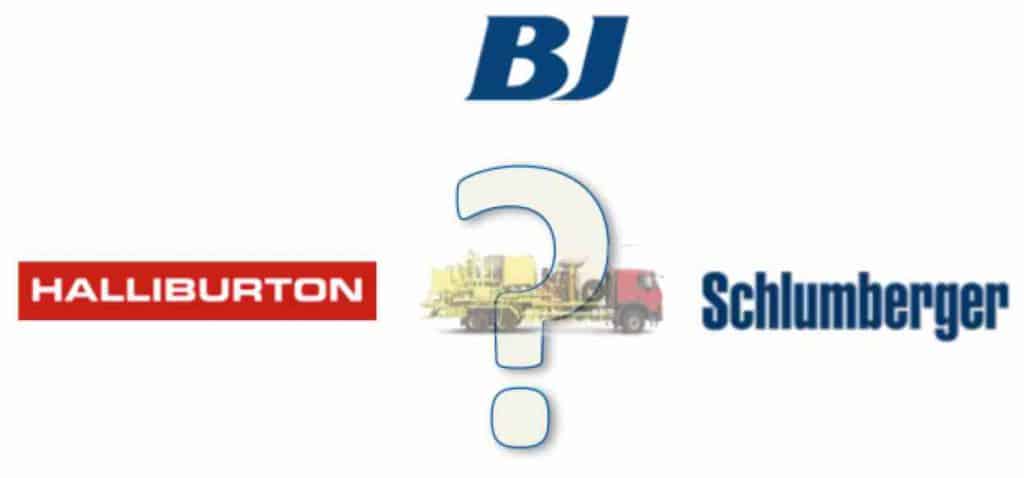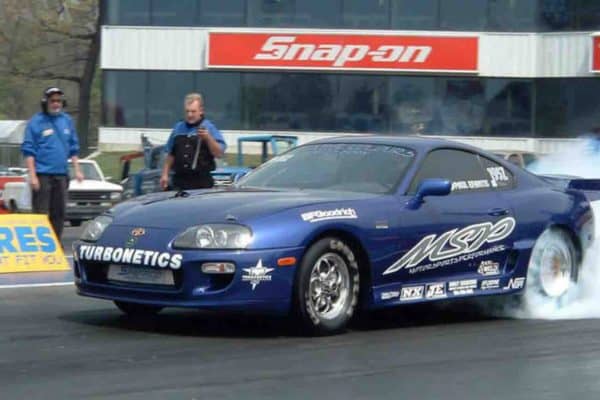Cementing supervisors ‘chat by the water cooler’
Any professional can take their machinery and equipment for granted. For a cementing specialist, the most essential item is a cement unit. A few days ago I was part of a joyful conversation between cementing supervisors, and we were talking about cementing equipment and their capabilities.
I remember several cool and not-so-cool comments concerning common cement pumping units with the three giants (BJ, HAL and SLB) and then, unexpectedly, I was silent for a moment and found myself asking the most straightforward question in my mind:
Which cement unit is the best?
We all love our cement units, and they are ‘the centre’ of what we do. It is where what is on paper (design) meets the real world (execution). More importantly, the cement unit is our instrument (deploying the cement program) to restore order to the disrupted subsoil, (to reinstate the original zonal isolation), and to build a long lasting well to reach energy to help sustain this world.
During the conversation, somebody mentions: “it is not about the cement unit, it is about the operator, the supervisor” … I know this is true, Why?
Because a friend of mine, Eli Perez, has been lucky enough to operate all three sets of equipment (HAL, SLB and BJ) and in all three, he has shined every time.
However, it is obvious the cement unit plays a significant role; so to bring light to this matter I think it is mandatory to ask the experts (cementing supervisor):
Which cement unit is the best?

See the discussion on LinkedIn
We can consider factors like operation, mixing cement, density control and maintenance.
Thanks for your contribution
L. Diaz



All
My name is Eli Jose Perez, I have 20 years experience in cementing área.
My first job was in SLB for 5 1/2 years where I started as trainee moving up to Service Supervisor I. Also I worked in BJ, Baker Hughes and Halliburton always in cementing área in different parts of the world.
In my opinión and based on my experience, even when the SLB has the highest technology, HALL equipment is the strongest and most resistant, while BHI / BJ is in the middle. However all of them always work if you follow best practices and quality procedures.
What do you think?
Thanks Eli, I know your career all these years.
Hi Lenin,
I am not sure if you are the same person I met in offshore rig RBK in Saudi – I was cementer operating BJ RAM unit.
I have operate all 3- BJ, SLB and HAL units in different modifications, from the 30 years old to the latest hi tech computerized and remote control.
20 years ago they were 3 different mixing systems – PSM for BJ, RCM for HAL and Jet for SLB, to mix and pump cement, but lately the 3 companies start changing it. For example: SLB took the mixing system from BJ and BJ took the HAL system.
But my personal opinion is – BJ is the best, simplest to maintain and easy to clean after the job.
I HAVE AN INNOVATION FOR THE PSM – I CALL IT VARIABLE JET SYSTEM. IF SOMEONE IS INTERESTED WE CAN DISCUSS.
Best Regards
Excellent comment Lubomir, it seems you know your stuff. Good to have you here.
I was not the person in Saudi. I have not worked there yet, but I am pretty much looking forward to it.
Cheers
L. Diaz
Lubo, Lenin;
I have only a few years in the bussiness let`say over 40… I have not seen any unit perform without a good quality maintenace program…. It does not matter what kind of unit you opérate it will fail if you do not give it TLC…
Maintenace = good performance = Happy customer
Lubo, Take care my friend… will see you sometime in Sofia.
Mario
Wise remark, Mr. Mario. Thanks for your feedback. This is a clear message for younger generations
Hi sir I am interested in learning the mixing system of bj unit I worked on Halliburton Rcm system for 6 years as cementer I heard from people that bj is good so I would like to know in detail about it . Can u send me in detail the mixing process and washing method all about the unit it would be help full for me as I am getting into one of the rigs where I have to operate bj unit now
Hi Abhinesh,
Please find here some details about the unit
It has 4 centrifuges > 2 – 3×2 water mix and 2 – 4×5 mix
You have 2 hydraulic system the B side and the C side
Each system is in case one side fails during mixing
You have a mixing water regulating valve on the mixing module
In addition to a surge tank that you must also calibrate an air regulating valve
Well before starting any mixing in the control panel you have to program the density of the cement slurry, the yield, water requirement and rate.
Hope this helps
Cheers
L. Diaz
I hate cementing bcoz it’s a messy job In oil field .
Yes, It can be sometimes, but most of the time it is a lot of fun before that
It makes sense that you would want to get the best cementing unit for your project. I think it’s true that a big part of their effectiveness is in who is operating them! It’s a good idea to have a professional who can handle it.
Thanks Braden, I think like you.
I also would like to add that the best operating environment to see machine and man working together is onshore (cementing operations om land). In Particular big volume jobs (intermidiate casings).
Units are machines build to mix and pump cmt slurrys.they are good in good hands.If operator (supervisor or who ever)dont know what is in his hands this lead to problems and as always – unit is bad.So,there is not best unit ,all of them are good in good hands.
Thanks for your comment Darko, that is a very valid point, however let’s imagine you have the oportunity to use the equipment of the 3 companies. With time you will probably end up having a favorite one, Right? That one would be the best for you and only you would know why.
Been cementing for well over 30 years now, mainly with Halliburton – but spent almost 15 years operating both BJ and Schlumberger cement units. All 3 have their good points and not so good points – but I have to say (from my experience), Halliburton definitely come out on top, for reliability, simplicity and dependability.
I liked the BJ Ram packing system which had the packing fitted directly inside the nut, allowing spare, already packed nuts ready to fit, saving time. However, I wasn’t so keen on the suction valves which required sliding hammers to remove them – and if not done on a very regular basis, they’d be cemented in.
Most of the Schlumberger units I operated had 2 different sized fluid ends – one for pumping high volumes quickly and the other for pressure testing. I felt that Schlumberger units were “over engineered” most of the time.
But overall, Halliburton pumps come out on top – and can I add that they most certainly have the sexiest curves….. ??
Hi Alan, this is an excellent contribution. Both here and in my discussion in LinkedIn most people agree with you. I believe we are almost reaching consensus to name which company has the best cementing units
It is rightly commented by several contributors that each of the three makes have their own typical behaviours. Notable comments for each make are:
(1) Halliburton: Versatile. Good after sales support. Reliable from operational aspect. Maintenance wise – OK. Needs frequent maintenance over SLB unit.
(2) Schlumberger: Better suction effect for the pumps due to combination of various factors. Maintenance demands more time and skill but is less frequent than Halliburton. Plug valves in discharge manifold give superior performance compared to their competitors. Considerable engineering applied and visible. More complex design overall but quite manageable/enjoyable once acquainted.
(3) BHI / BJ: Simple to operate and maintain. Most of the cementers can operate / maintain it comfortably and with confidence. Other two makes preferred for requirements demanding extreme technical considerations for obvious reasons.
These are only quick points. Each make has its own salient behaviour / performance characteristics which can be categorized as merits and demerits.
Thanks Bimalkumar, These are very precise and relevant features. They are technical in nature, but they make clear why one person might consider a particular equipment set better over another.
Excelent contribution !
L. Diaz
All cementing equipment is today able to mix standard cement slurries. But what makes the difference between a “good” and the “best” cementing equipment?
First all equipment stands and falls with the people maintain and operate it. A poorly maintained unit does not perform. My criteria for the best cementing unit would be how close it mixes to the lab data provided. A Waring blender provides a lot more mix energy than any field equipment. The closest field system able to provide such an amount of mix energy would have been the VIP -mixer from SLB. The density control was outstanding and the operation easy. Plugging up like all nozzle driven cement mixers do was not a problem. The timing for this equipment was wrong it came for the oilfield too early.
My choice today is the CBS 393 Mark III Slurry Chief from SLB. Why? The density control is very good. A special function of the knife gate prevents bridging of the bulk cement f.e. 7 hours pumping lead slurry without stoppage. Additional with some minor changes it can provide nearly the same mix energy as the VIP and the slurry density can be pushed beyond boundaries any other field equipment can reach today. In a test run we reached with a silica slurry without weighing agent a density of +2.5 sg before losing control due to viscosity.
I am absolutely on board with what you are saying, there is a relationshio between the unit and the operator, which at the end is what defines good performance for any unit. However, I was also interested in the experince of some operators, when they had the chance to have worked with all 3 major units. They no doubt can perform well with any one, but they can also tell which unit felt better for whatever reason.
Do you have any photos of VIP -mixer from SLB? Could you send them to me? I want to learn. Thank you very much !
Hi Tiger
I serached but couldn’t find an image in my files, you are talking about the CBS 062 offshore vip mixerTM unit
Will ask the Dowell old guys
Sorry
Cheers
L. Diaz
I look forward to your sending the photos of VIP -mixer from SLB to my email(346094713@qq.com). Thank you!
Why considering only the three big companies … now there are many cementing units manufacturing all over the world for example
– NOV
– SERVA
– Stewart & Stevenson
– MSI
– UE Manufacturing
– Jereh China
– Kerui
– Freemyer Industrial
and many small companies in Europe and the US.
The components of the cement unit is crucial for the reliability and less maintenance required the best fit in my opinion as follow:
– Engine – ( CAT or Detroit )
– Transmission ( Allison )
– Triplex Pump ( HT400 – Demay 500 – SPM TWS600S )
– Hydraulic System ( EATON )
– Centrifugal Pumps ( MISSION )
– Mixing system ( RCM ) or any recirculation mixing without surge tank with the slurry tub 15 bbls to 25 bbls
– It is preferred to have auxiliary engine for hydraulic system to avoid power loss from the main engines
The more electronics the more the headache.
I believe Halliburton Ellite is the best ever made cementing Unit
Excellent contribution Mohamed,
Very appropriate to highlight the diversity of manufactures; however, the purpose of this discussion is not to evaluate the quality of the manufacturer but cement units models as built to specs and from the perspective of the people operating them.
Cheers
we are looking for supply line of truck mounted Cementing units. In fact there is an inquiry with us for supply of good numbers of Cementing units Single/Twin pump 10,000psi/15,000psi WP truck mounted (kenworth/Merc/Peterbitt/ Volvo). The job also includes AMC/Services/ Breakdown services and setting up maintenance workshop at various work centers for a period of more than 5 years.
I’m jereh’s R&D engineer. Do you need any more cementing equipment? If you have any requirements, you can send me an email: hu.liang@jereh.com,Thank you !
Please provide list of the companies supplying Truck mounted Cementing pumping units.
Hi Dr. Sharad, thanks for your interest in good well cementing, in terms of cementing units, this a a good place to start for quality equipment: https://www.goes-well.com/oilfield-cementing-equipment/. Ask for Martin Knoop
Very informative. Interested to know the typical maintenance cost of a Double pump cementing unit. A breakdown in percentage of various equipments shall be highly appreciated.